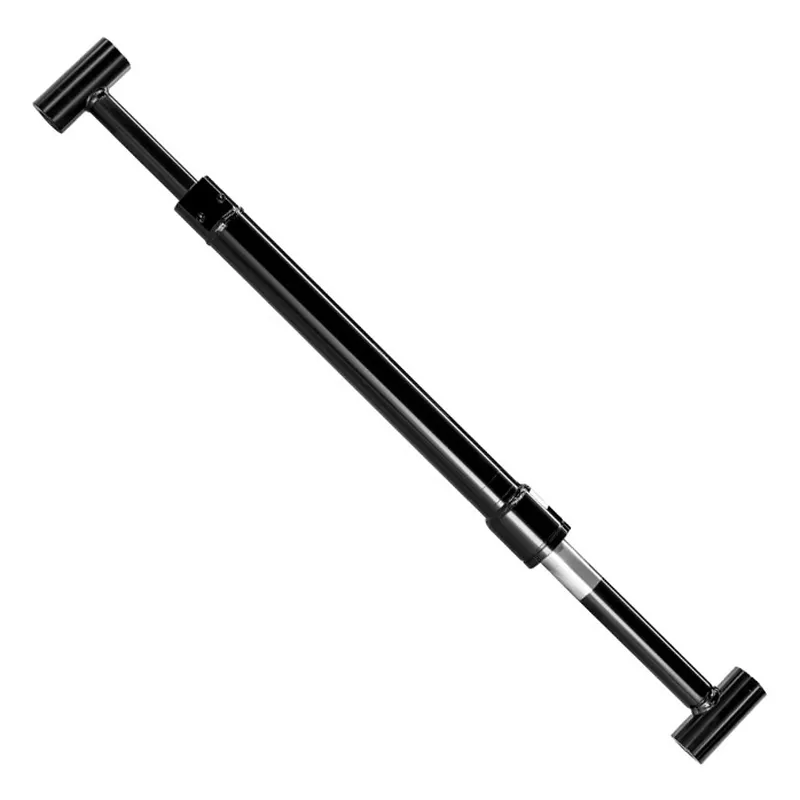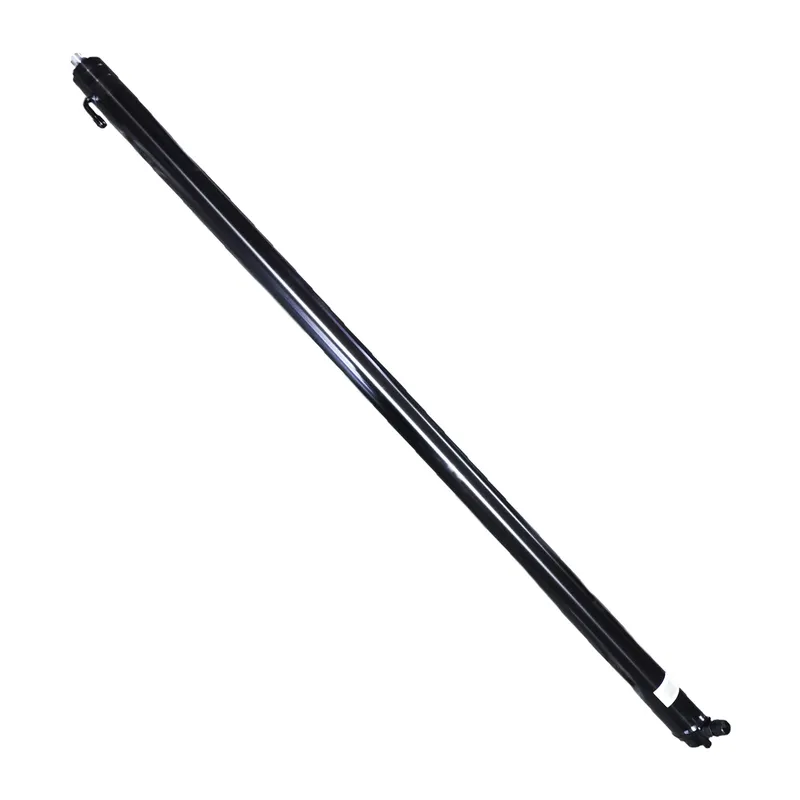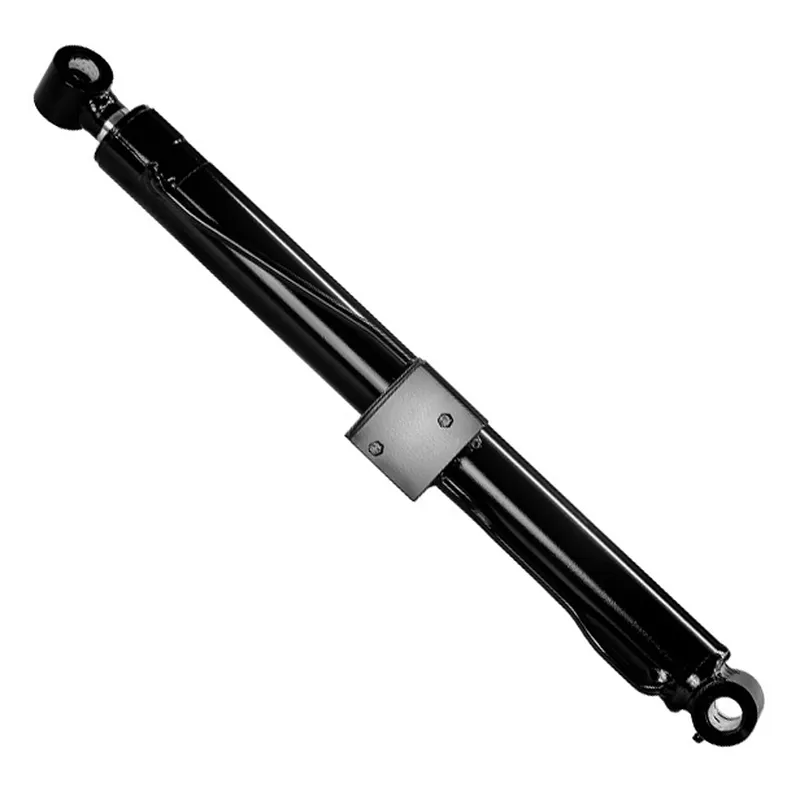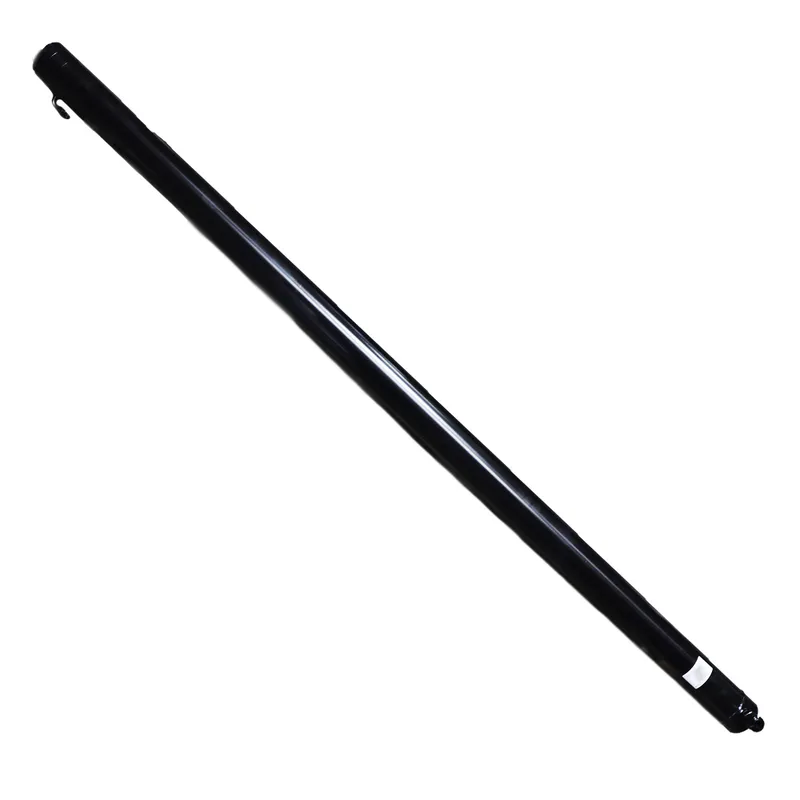Luffing Hydraulic Cylinder for Telescopic Crawler Crane
The luffing hydraulic cylinder for a telescopic crawler crane is a critical component used to control the angular movement, or luffing, of the crane’s boom. Luffing refers to the ability of the boom to move upward or downward, adjusting its angle to facilitate precise lifting and positioning of heavy loads. This hydraulic cylinder provides the force needed to pivot the boom by converting hydraulic pressure into mechanical motion.
The luffing hydraulic cylinder for a telescopic crawler crane is a critical component used to control the angular movement, or luffing, of the crane's boom. Luffing refers to the ability of the boom to move upward or downward, adjusting its angle to facilitate precise lifting and positioning of heavy loads. This hydraulic cylinder provides the force needed to pivot the boom by converting hydraulic pressure into mechanical motion.
Designed to withstand immense loads and harsh operating conditions, the luffing hydraulic cylinder is typically made of high-strength steel. In telescopic crawler cranes, these cylinders are essential for maintaining stability and operational efficiency, especially in confined or uneven work environments. By enabling precise boom articulation, they enhance the crane's versatility and adaptability across various construction and industrial applications.
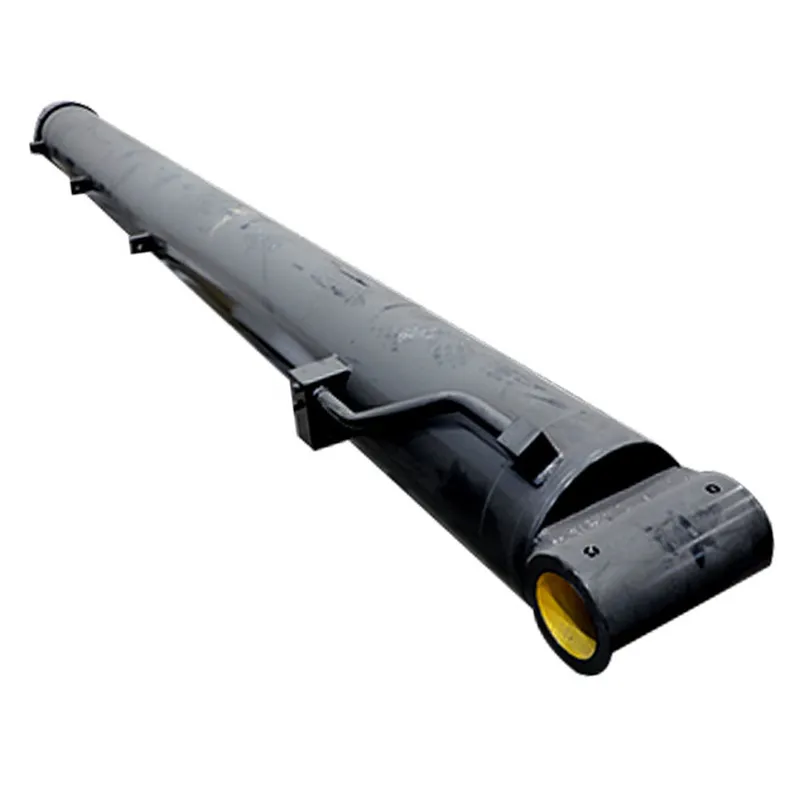
Luffing Hydraulic Cylinder Dimensions

| Hydraulic Luffing Cylinder |
|||||||
| Drawing number | Bore diameter (D) | Rod diameter (d) | Stroke (S) | Installation distance (L) | Working pressure | Interface dimensions (M) | Weight |
| ZXSTC1000S.2.5-00 | Φ320 | Φ280 | 4000 | 4750 | 32MPa | 2-M27*2;4-G1/4 | 1522kg |
| Product Name: | Luffing Hydraulic Cylinder |
| Function: | Control the movement of the main arm. |
| Cylinder diameter: | 220mm-320mm |
| Rod diameter: | 180mm-280mm |
| Travel: | 2000mm-4000mm |
| Maximum pressure: | 32MPa |
| Maximum thrust: | 2574KN |
Telescopic Crawler Crane Hydraulic Cylinder Types
A luffing hydraulic cylinder in a telescopic crawler crane is a pivotal component that facilitates the controlled adjustment of the crane’s boom angle, enabling the raising and lowering motion known as luffing. This hydraulic luffing cylinder operates using principles of fluid dynamics within a closed hydraulic system. The cylinder consists of a robust barrel, a piston, a piston rod, and high-pressure seals. Pressurized hydraulic fluid, typically oil, is pumped into the cylinder from the crane’s hydraulic system, driven by a pump powered by the crane’s engine or an auxiliary power unit.
When the operator activates the luffing control, hydraulic fluid is directed into one side of the cylinder (either the rod side or the cap side), causing the piston to move. Extending the piston rod pushes the boom upward, increasing its angle relative to the crane’s base, while retracting the rod lowers the boom. The fluid’s pressure is precisely controlled via valves, ensuring smooth and stable motion, critical for handling heavy loads safely. The telescopic crawler crane’s design, with its extendable boom sections, relies on the luffing cylinder to maintain stability across various boom lengths and configurations.
The hydraulic luffing cylinder is engineered with high-strength steel to withstand immense forces and incorporates advanced seals to prevent fluid leaks under high pressure. Safety features like pressure relief valves protect against over-pressurization. This mechanism allows the crane to operate efficiently in confined spaces or uneven terrain, making the luffing hydraulic cylinder essential for precise load positioning in construction, infrastructure, and industrial applications.
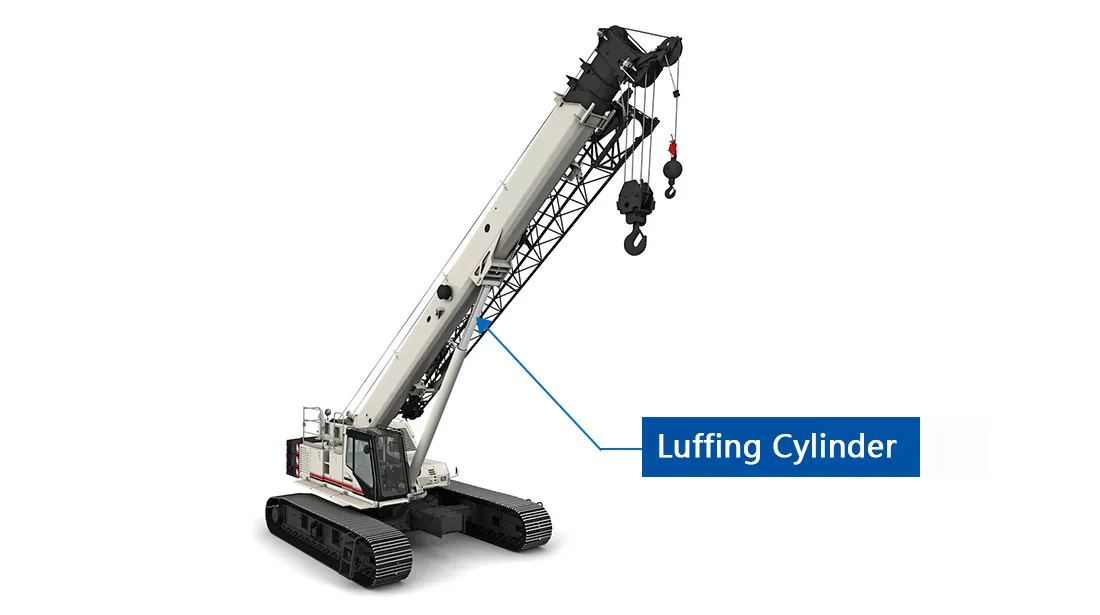
Telescopic Crawler Crane Luffing Hydraulic Cylinder Benefits
- Precise Boom Control
The luffing hydraulic cylinder enables accurate adjustment of the boom angle, allowing operators to position loads with high precision. This ensures safe and efficient handling, especially in confined or complex construction sites, enhancing overall operational accuracy. - Enhanced Stability
By controlling the boom’s vertical movement, the crane hydraulic cylinder maintains crane stability across various configurations. Its robust design withstands heavy loads, ensuring the crane remains balanced on uneven terrain, which is critical for safe lifting in challenging environments. - Improved Reach Flexibility
The hydraulic luffing cylinder supports the telescopic boom’s variable length, allowing seamless luffing at different extensions. This adaptability enables the crane to access hard-to-reach areas, making it ideal for urban construction or projects requiring extended reach. - High Load Capacity
Constructed from high-strength steel, the cylinder handles immense forces during heavy lifting. Its ability to manage high-pressure hydraulic fluid ensures reliable performance under demanding conditions, supporting the crane’s capacity to lift substantial loads safely. - Smooth Operation
The hydraulic system delivers controlled, fluid motion, minimizing jerks or sudden movements. This smooth operation enhances operator confidence, reduces wear on components, and ensures precise load placement, improving efficiency and safety during crane operations. - Durability and Reliability
Advanced seals and robust materials ensure the telescopic crawler crane hydraulic cylinder withstands harsh conditions and prolonged use. This durability reduces maintenance needs and downtime, providing consistent performance in rigorous applications like infrastructure projects or industrial lifting tasks.

Custom Luffing Hydraulic Cylinder for Telescopic Crawler Crane
- Rod Diameter
The rod diameter is a critical specification that affects the cylinder's strength and load-bearing capacity. A thicker rod provides greater durability and resistance to bending under heavy loads, ensuring reliable and long-lasting performance during demanding lifting operations. - Bore Diameter
The hydraulic cylinder bore diameter determines the internal size of the cylinder and the amount of hydraulic fluid it can hold. A larger bore diameter generates higher force, making it essential for handling the significant loads involved in crane applications. - Working Pressure
The hydraulic cylinder working pressure is the maximum hydraulic pressure the cylinder can safely withstand. It is designed to match the operating conditions of the crane, ensuring efficient performance while maintaining safety and preventing damage to the hydraulic system. - Installation Distance
The installation distance refers to the space between the mounting points of the cylinder when fully retracted. This measurement is crucial to ensure the cylinder fits seamlessly within the crane's structure without interfering with other components or movement. - Stroke Length
The hydraulic cylinder stroke length is the distance the piston rod can extend or retract to adjust the boom's angle. A custom stroke length ensures the cylinder meets the specific luffing requirements of the crane for optimal flexibility and reach. - Interface Dimensions
The interface dimensions include the size and design of mounting brackets, ports, and connections. Customizing these dimensions allows the cylinder to integrate perfectly with the crane's existing hydraulic and structural systems, ensuring compatibility and ease of installation.
 |
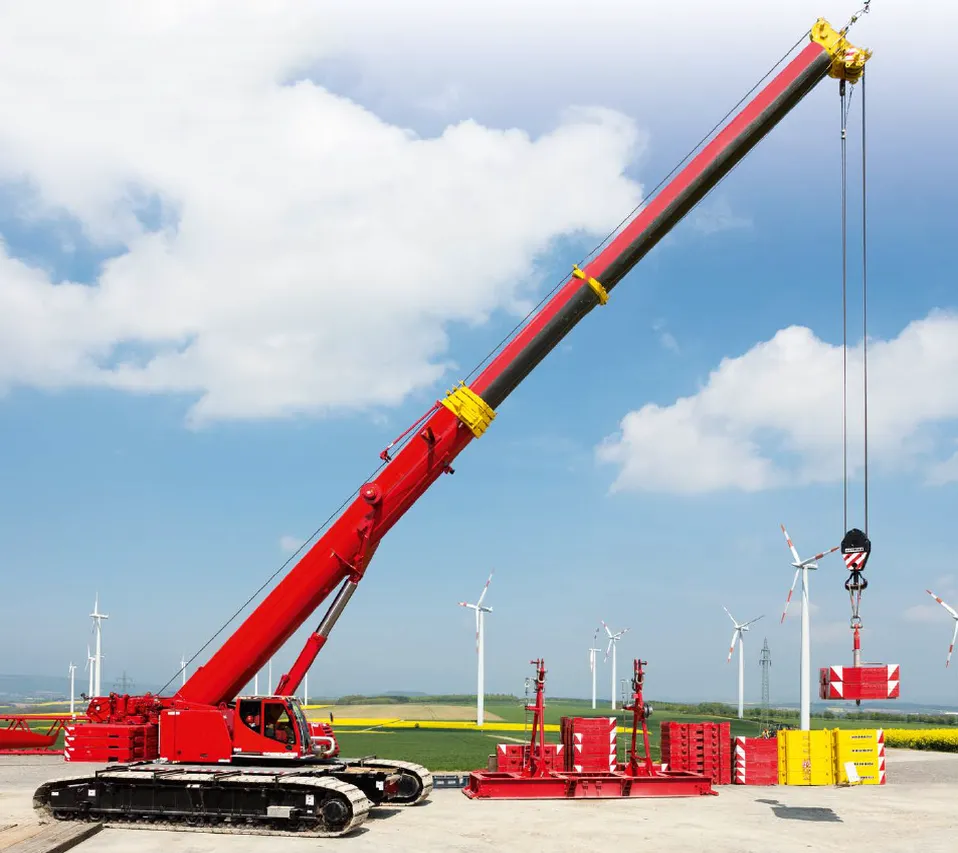 |
Additional information
| Edited by | Yjx |
|---|
